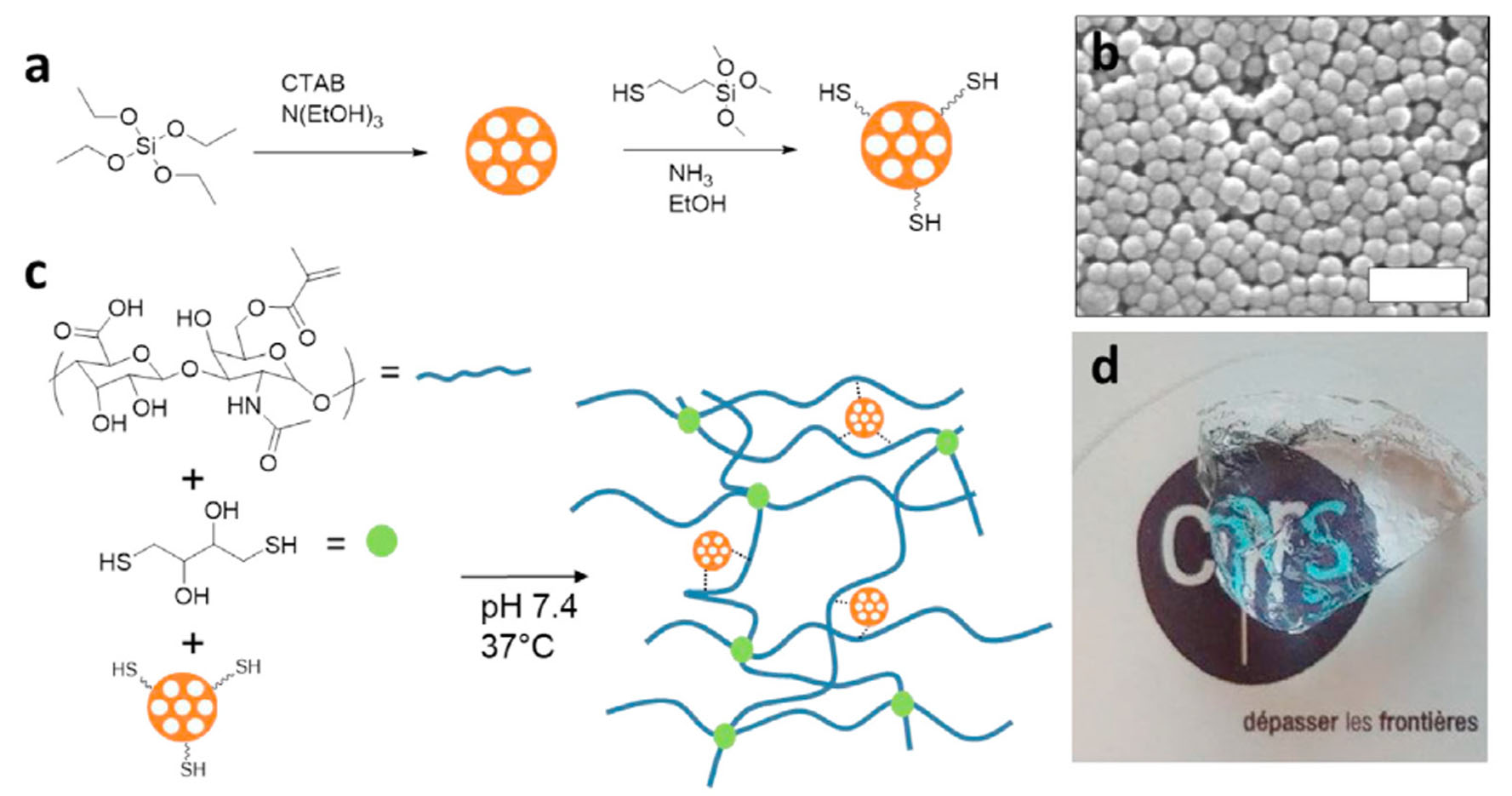
.png)
RESEARCHDepartment of Pharmaceutical Sciences |
|

Luminescent materials for imaging and diagnosticsOur group is interested in develop porous nanocarriers characterized by high biocompatibility, degradability, large surface area for drug loading, stability and low costs. Among these nanomaterials, we are able to prepare: zeolites, organosilica nanoparticles, silicon nanoparticles or mesoporous silica (that entrap not only small but also large therapeutic or imaging biomolecules and even break with an external stimulus in the target tissues and cells). Such nanosystems can exhibit different morp hologies, dimensions and structures, as well as, several functionalization moieties on their surface. Part of our efforts are also focussed on the synthesis of microporous materials to construct artificial receptors for selectively capture hydrophilic mole cules present in biological fluids. Our objective is to create smart novel micro and nanomaterials with a potential translation into the clinical practice and with a broad range of properties for in vitro and in vivo applications such as diagnostics and th erapy of several disease |
|

Metallodrugs and metallo-enzymesTransition metal catalysis and biocatalysis have been the most widely used approaches to producing enantiopure products. These synthetic methods have been considered as separate fields until recently, when artificial metalloenzymes (Ar - Ms) have emerged, combining the attractive properties of both approaches. In order to achieve this goal , the supramolecular anchoring strategy results particularly convenient with the biotin - (strept)avidin technology proving the most representative anchoring system in this field . Based on biotin – streptavidin bioconjugation , we have recently developed a series of artificial imine reductase in which a chiral biotinylated 1,3 - diamine ligand or a biotin - tethered Cp* moiety was coordinated with an iridium(III) centre and anchored to a streptavidin mutant for the stereoselective reduction of the cyclic imines. Inspired by the recently reported ability of the glycopeptide vancomycin (Van) to coordinate bivalent metal ions and encouraged by the results obtained by using Van for setti ng up a hybrid catalyst in coordination to an iridium centre , vancomycin was exploited as a new chiral second coordination sphere for the preparation of artificial metalloenzymes in the presence of aminoethylbenzensulfonamide ligands decorated with the D - A la - D - Ala dimer . These hybrid systems have the potential to impact chemical synthesis in ways not readily achiev able using conventional transition metal catalysts . The concept of using modern medicinal chemistry approaches to investigate the structure and properties of metal complexes for medicinal purposes has matured immensely in the 50 years since the Rosenberg discovery of cisplatin. The persistence of severe sid e - effects along with the emerging of drug resistance evoke the need of a new generation of transition metal - based chemotherapeutics. These premises guided our research group in the development of new platinum complexes not only neutral but also positively and negatively charged . Indeed, different chelating diamine ligands have been developed base on aminomethyl imidazole and 8 - amino quinoline scaffolds with the idea to provide a novel pharmacodynamic profile to the corresponding platinum complexes |
|

Luminescent materials for imaging and diagnosticsPhotochemistry is one of the most interesting topics in chemistry. For several years, our group has been interested in phosphorescent transition metal complexes, such as platinum(II), iridium(III), ruthenium(II), rhenium(I) or copper(I) compounds, as suitable components for photon - activated or electrochemical generated luminescence . Through a rational design of the molecular structure, we have shown how to modulate the emission color, in particular t owards the development of challenging UV, blue emitters and white light generation. Many of them have successfully applied in imaging and diagnostic application. Especially, our group for the first time discover ed the aggregation - induced electrochemiluminescence, opening new research paths in the quest for novel, more ef fi cient emitters and platforms for biological and environmental sensing applications. Our group particularly interested in platinum(II) complexes as they have trend to self - assemble as nanoparticles in defined structure (fibers, micelles, vesicles, gels and dynamic reversible structures), in which the emission color can be changed or enhanced dramatically. Our future aims in this sense are to keep studying the interaction of different Pt complexes with biomolecules and biological systems in nan o - l evel, which have the potential to be developed as new theragnostic nanoplatform. We are also interested in nano materials due to the possibility to implement large number of imaging labels as well multimodality on these systems . An additional focus is the use of ultra - small nanoparticles for multi modal imaging 
|
|
Nanomaterial HybridsThe aim of this research thrust is to imbue advanced functions onto materials by creat ing hybrids through the incorporation of silica nanoparticles into the overall design strategy . Some of t hese tailorable fun ct ions include on - demand degradability, release of payloads, tuning of hydrogel gelation and material properties, biocompatibility, and directed cell growth. Future studies look to expand on our previous work by capitalizing on the numerous uniquely dynami c properties of silica nanoparticles that can be exploited when incorporated into hydrogels and other scaffold materials to pioneer cutting - edge hybrid nanomaterials 
Selected Publications: |